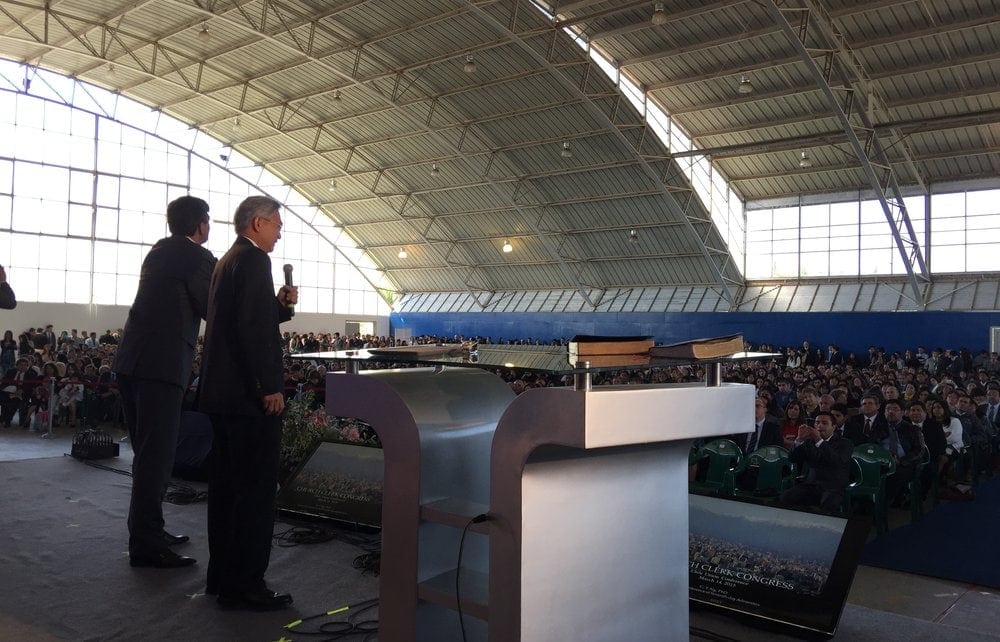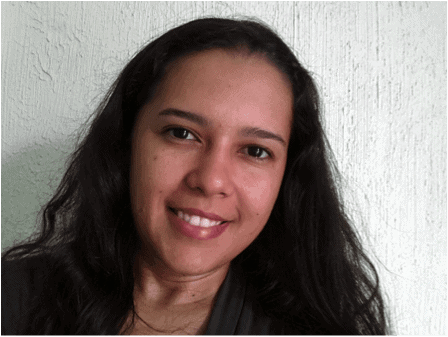
, news editor, Adventist Review
G.T. Ng, executive secretary of the Adventist world church, took a 10-day tour of three countries to find out why churches in the South American Division are so successful in baptizing and retaining members.
He was surprised with what he found.
The Adventist Church in South America does more than organize robust evangelistic meetings and community initiatives like its counterparts in other parts of the world. It asks church clerks, whose responsibilities typically revolve around bookkeeping, to oversee a unique program that reaches out to former Adventists.
The results of the Reencounter program are stunning. Rebaptisms have grown to a staggering 12 percent to 15 percent of all baptisms in the past three years, a record in the Adventist world church.
“The DNA is that church clerks go beyond their traditional role of recordkeeping of membership,” Ng told the Adventist Review.
“To rectify the tragic loss of members, church clerks are trained to engage in local church membership care,” he said. “They take note of missing members. They organize visitation teams to reclaim lost members. It’s an innovative approach to redeem believers who have been lost twice.”
Ng has prioritized membership retention during his five years in office. While the Seventh-day Adventist Church has a worldwide membership of 18.5 million, the figure would be much higher if nearly a third of the members baptized over the past 40 years had not dropped their membership or simply gone missing, according to statistics that his office released last fall.
“As a church, the retention rate of new believers has been dismal,” Ng said.
Adventists leaders around the world have sought to reach out to former members over the years, but no region has been quite as successful as the South American Division, church leaders said.
Ng made his first trip to Chile, Peru, and Ecuador last month to study why rebaptisms accounted for an astounding 29,866 of the division’s 195,509 baptisms in 2014. Those figures represent a steady growth from the 28,299 rebaptisms among 190,314 baptisms in 2013, and the 24,732 baptisms among 174,767 baptisms in 2012. The division has 2,333,487 members.
“Not all of the rebaptisms were the result of the Reencounter program,” said Magdiel E. Pérez Schulz, executive secretary of the South American Division.“But we can surely state that the majority were and every year the number of rebaptisms are increasing.”

Reencounter was born in 2012 when an annual meeting of secretaries from around the South American Division realized with consternation that a significant number of members were leaving the church and they lacked any plan to try to win them back.
When contacted, many former members expressed a desire to return, but the idea of attending church without someone visiting them first with a personal invitation to return left them feeling scared, ashamed, or alienated, Pérez said.
“We even heard stories about some of them coming back by themselves and being greeted by well-intentioned leaders with the words: ‘Welcome back, prodigal son! Have you had enough of the world, or has the devil let go of you?’” Pérez said.
So the conference secretaries decided to make the reclamation of former members a priority and delegate the responsibility to church clerks, their counterparts at local churches.
As a result, church clerks prepare a special Sabbath program and sermon once or twice a year that former members are invited to attend. The division provides special materials for the initiative, including Bible studies and DVDs to hand out to former members. The DVD recording contains an invitation to return to church.
“It has proven to bring back former members,” Pérez said.
The efforts have also proven useful in retaining new members, who join the clerks in inviting family members and friends to church, he said.
A 22-minute video recording titled, “Missing You,” that the South American Division distributed on DVDs to former members in 2012. In Spanish with English subtitles.
Ng, who spent some time examining the program, said he believed it was flourishing because the church clerks were backed by a church unified in its vision of mission and explicitly obedient to the Bible and the counsel of Adventist Church cofounder Ellen G. White.
“One of the first things that impressed me was a sense of corporate unity,” he said. “Be it union, conference, or institution, one pulse beats through the entire Adventist infrastructure.”
He said Adventist believers embraced 2 Chronicles 20:20 — which says, “Believe in the Lord your God, and you shall be established; believe His prophets, and you shall prosper” — and had strong confidence in the Spirit of Prophecy, especially the counsel that “the work of education and the work of redemption are one” (Education, p 30).
“Hundreds of elementary schools, high schools, and universities testify to that commitment,” Ng said. “Peru, for example, has three university campuses with almost 10,000 students. Where schools are established, evangelism flourishes.”
Local church leaders also have a clear vision about mission, sharing a common understanding that every church and institution exists solely for mission, Ng said.
“Of the missions and conferences we visited, administrators took time to articulate what they believed to be the mission of the church and how resources were being directed toward evangelism,” he said. “It’s no wonder church-planting is going great guns in the South American Division.”
The number of churches in the division has increased from 21,345 in 2010 to 25,942 in 2014, an increase of 21.5 percent over four years.
In addition to reaching out to former members, church clerks are tasked with church planting and work together to raise funds to construct at least one church per year in unreached areas identified by the church’s Global Mission. Ng attended the dedication of two churches in two conferences in Ecuador. One church cost $28,000 to build, while the other cost $16,000.
“During the dedication services, I couldn’t help but notice the sense of pride beaming from the faces of church clerks in attendance, having collectively accomplished something they had thought impossible individually,” said Ng, who cut the opening ribbon. “The spirit of camaraderie was unmistakable.”
A similar spirit emanated from a conference of 720 local church clerks that he attended at Chile Adventist University, he said. Six hundred other church leaders joined the conference to — like Ng — learn from the church clerks how to better organize the church and make it more mission-oriented.
Ten church clerks interviewed by the Adventist Review said they were united in their enthusiasm for their extra responsibility of reaching out to former members.
“Our responsibility is not just keeping the books of the church active and updated. We need to be co-helpers of Jesus in the mission of searching, keeping, and rescuing our members,” said Jacilane Maria da Silva Ibiapino, 31, church clerk at the Airport Church in Rio Largo, Brazil.

Jacinta Marta de Azevedo Perpetuo, 46, a church clerk in Ipatinga, Brazil, said she had experienced no greater joy than seeing a former member approach her at the end of a special Sabbath program and, with tears in her eyes, say: “Thank you for not giving up on me. If it weren’t for your invitation, I never would have been here.”
“It’s completely worth the effort, the work, and the prayers — everything that we do in preparing this program,” she said.
The clerks appealed to their counterparts in other world regions to join them in reclaiming former members.
“To all the church clerks of the Seventh-day Adventist Church, I would like to say that our work is not limited to keeping church books and the minutes of church committee meetings,” said Evelyn Katherine Lucio Luciano, 26, a church clerk in Chimbote, Peru. “Our main duty is to fulfill the mission, and we have the opportunity of working efficiently for God through the Reencounter program.”
She spoke of the thrill of seeing the eyes of former members “sparkling with tears of joy” as they returned to church.
“I encourage you to organize this project in your church,” she said. “You will be the happiest person, seeing dozens of souls come back to the church.”